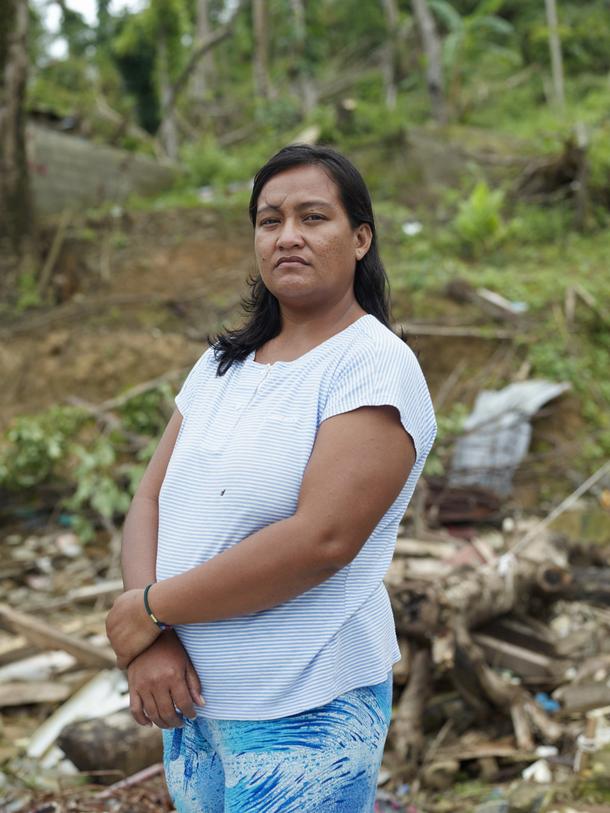One year after Typhoon Haiyan, recovery efforts are underway in the Philippines.
The challenge now is to ensure that the recovery helps people find new ways of making a living, get access to safe shelter, and better withstand future shocks.
For many of the Philippines poorest residents, the 12 months since Typhoon Haiyan slammed into their communities have been a test of endurance as they struggle to rebuild homes and make a living.
The strongest storm ever recorded to make landfall, Haiyan—known locally as Yolanda—left more than 6,000 people dead and displaced four million others. Many of them have not yet been able to return to their homes: An estimated 475,000 people still live in inadequate or unsafe shelters while more than 24,000 others remain camped in evacuation centers. And a new typhoon season is bringing heavy rains and fresh waves of misery to people living in leaky tents or shelters cobbled together from the plastic and metal debris left in Haiyan’s wake.
“I feel like we are dying slowly every day,” said one survivor from Northern Cebu.
Even though the emergency response was strong, today many Filipinos, particularly those who once worked in the coconut farming sector, have been unable to continue their livelihoods. Haiyan damaged or destroyed 33 million of their coconut trees, putting at risk the future of more than one million farming families.
Oxfam’s response

Coconut farmers were among those Oxfam’s emergency response reached early on. We formed partnerships with local cooperatives to remove damaged trees and we provided chainsaws, saw mills, and training, and then paid farmers to clear land of fallen trees—ensuring the farmers earned some income in the short-term.
But assistance to farmers was just part of a large-scale effort that your support made possible and that has now helped 868,960 people. Working across 32 municipalities, Oxfam has invested $42 million—part of a $65-million three-year initiative—in providing people with supplies for clean water, building community latrines, offering cash vouchers for food and home repairs, and repairing and replacing fishing boats. We dug wells and installed hand pumps. We distributed mosquito nets and chamber pots. We trained community health volunteers and ran hygiene education campaigns in schools.

Looking ahead
Underlying the shelter and work challenges many survivors face is the poverty that defined their lives before the storm struck and the reality of limited land rights.
In July, the Philippine government declared an official end to the humanitarian response phase of the typhoon. It has developed a $3.9 billion master plan for recovery, including a proposal to resettle about 205,000 households in safer places. But in this most-disaster prone region of the world, Oxfam notes that the resettlement sites lack specific provisions for safe evacuation centers and a stable food supply.
Also worrisome to families who will move, particularly those whose income depends on fishing, is the question of how they will make a living in some of the sites that are far from both the coast and town centers. Many Haiyan survivors feel their choices are bleak.
“Either we stay by the coast and face typhoons, or we move to the mountains and starve,” said one.
The government-led group overseeing resettlement has indicated its planning does include concern for people’s livelihoods. But Oxfam says the measures must be urgently stepped up and that support must take into account fishing-related activities including seaweed farming and fish vending—both endeavors often dominated by women.
And before families can move, local authorities have to acquire land for resettlement that meets the requirements of the national authorities. Since government-owned land is scarce, officials are relying on the acquisition of private land. As of October 2104, a total of 3,017 homes were under construction while just 452 had been completed—less than one percent of the 205,000 permanent homes the government has set as its target.
In the end, recovery efforts need to be part of a long-term commitment to strengthen the social and economic development of regions hit hard by Haiyan. Oxfam is now exploring ways to help people develop new skills and new ways of earning a living. And with local governments we are also working on a more strategic approach to helping communities manage their water supplies. The challenge is to ensure that all these initiatives leave families better able to pursue diverse ways of making a living, to access safe shelter, and to withstand the typhoons, floods, and earthquakes that hit their nation every year.
